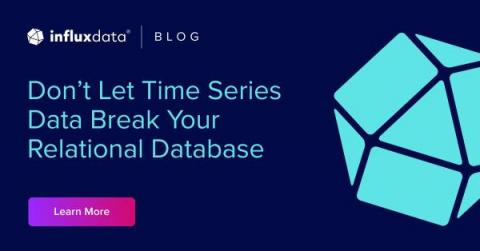Operations | Monitoring | ITSM | DevOps | Cloud
Databases
The latest News and Information on Databases and related technologies.
SQL vs. NoSQL Today: Databases, Differences & When To Use Which
Never-firing alerts: What they are and how to deal with them
Alerting is one of the main reasons for having a monitoring system. It is always better to be notified about an issue before an unhappy user or customer gets to you. For this, engineers build systems that would check for certain conditions all the time, day and night. And when the system detects an anomaly - it raises an alert. Monitoring could break, so engineers make it reliable. Monitoring could get overwhelmed, so engineers make it scalable. But what if monitoring was just poorly instructed?
How DevOps is shaping Financial Services #4: The rise of cybersecurity
Don't Let Time Series Data Break Your Relational Database
This article was originally published in The New Stack and is reposted here with permission. It’s tempting to stuff time series data into the familiar Postgres or MySQL database, but that’s a bad idea for many reasons. To the uninitiated or unfamiliar, time series data exhibits similar characteristics to relational data, but the two data types have some critical differences.
How to release value to customers faster, safer, easier
Datadog integration roundup: Apache Impala, CockroachDB, and more
At Datadog, we’re constantly developing new integrations to give you complete, end-to-end visibility into your entire system. Here are just a few of our latest releases.
How to monitor Oracle Database with Grafana Cloud
Oracle Database is an enterprise multi-model database system capable of handling large amounts of data across multiple database servers with support for a wide variety of workloads. It’s a widely used and proven database software, so we are incredibly pleased to announce that it now has a dedicated cloud integration in Grafana Cloud. With the Oracle Database (OracleDB) integration, you can monitor your database’s performance with ease.
How to use VictoriaMetrics for monitoring with Netdata Agent
Netdata Agent is an open-source monitoring agent capable of collecting metrics from various sources and visualizing them in real-time. It is able to discover and collect metrics with zero configuration, providing a quick and easy way to monitor systems.











